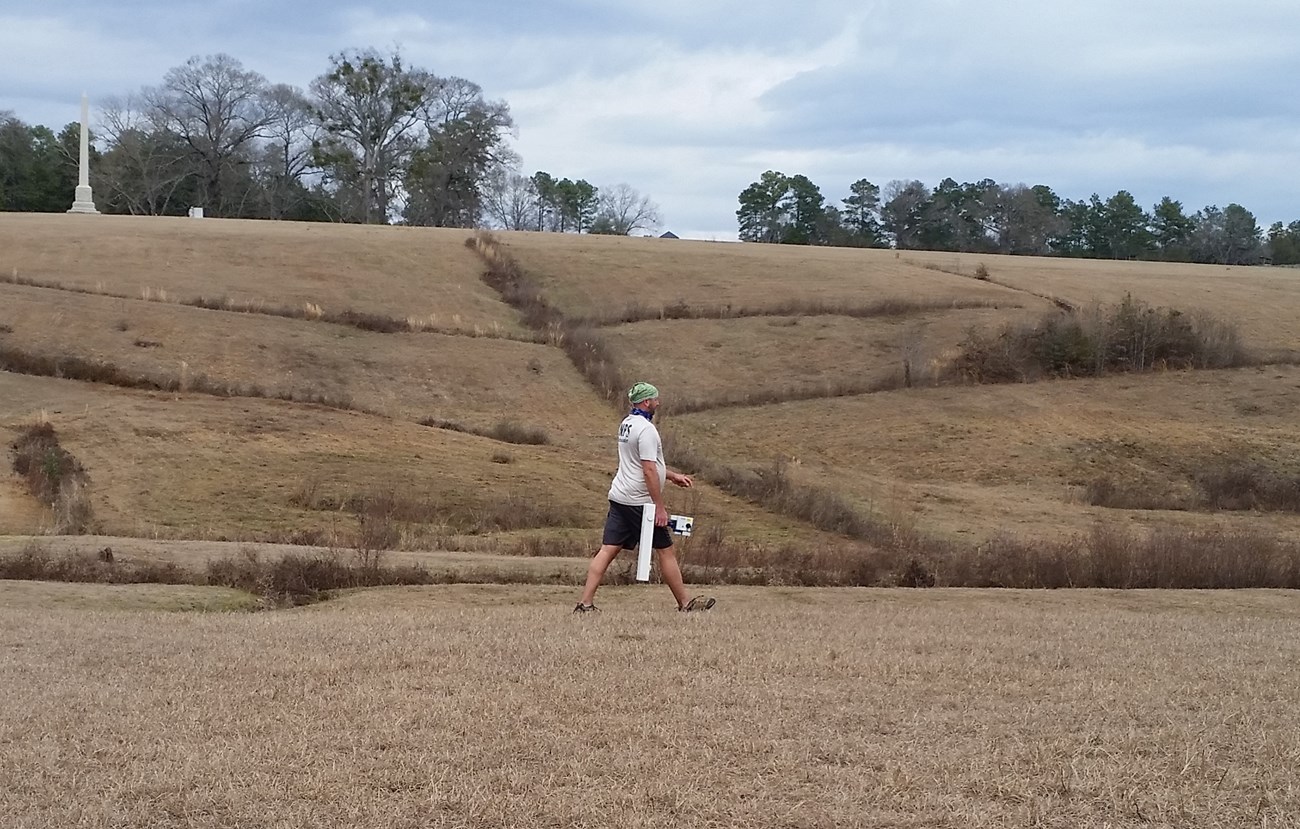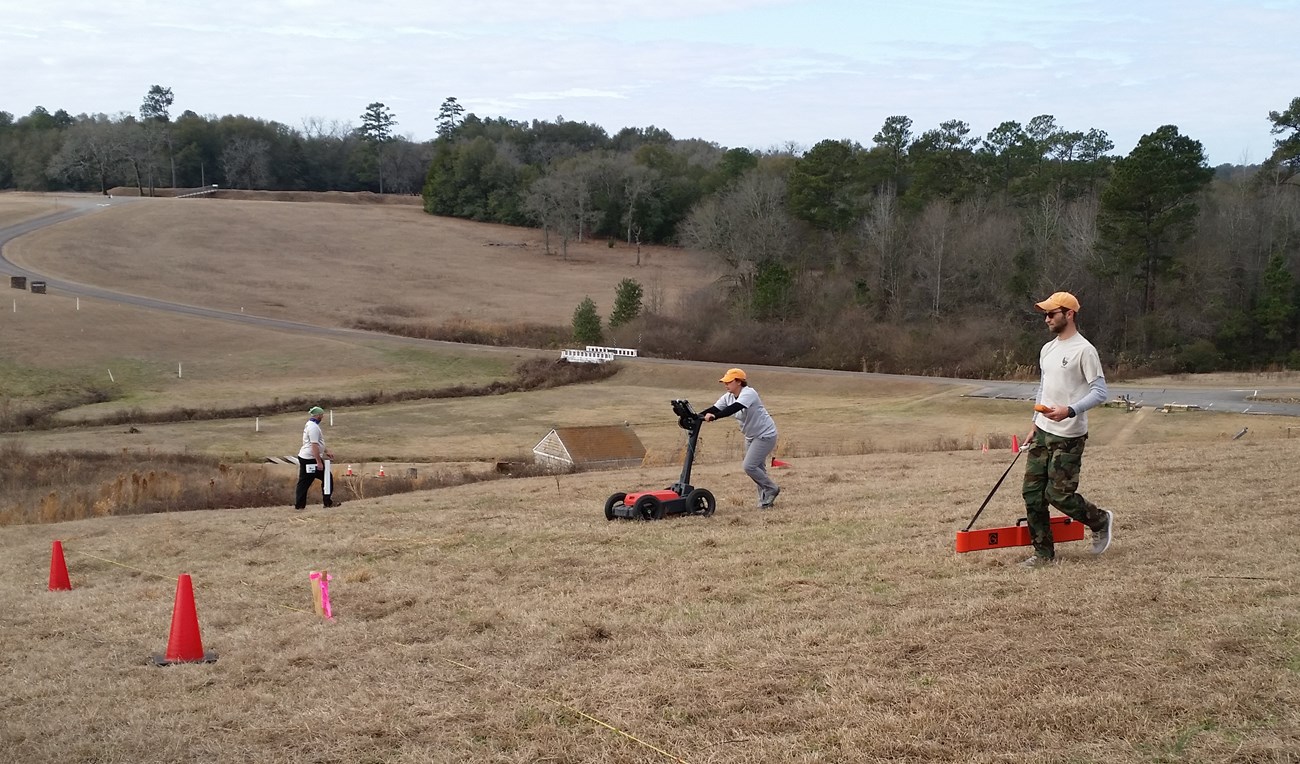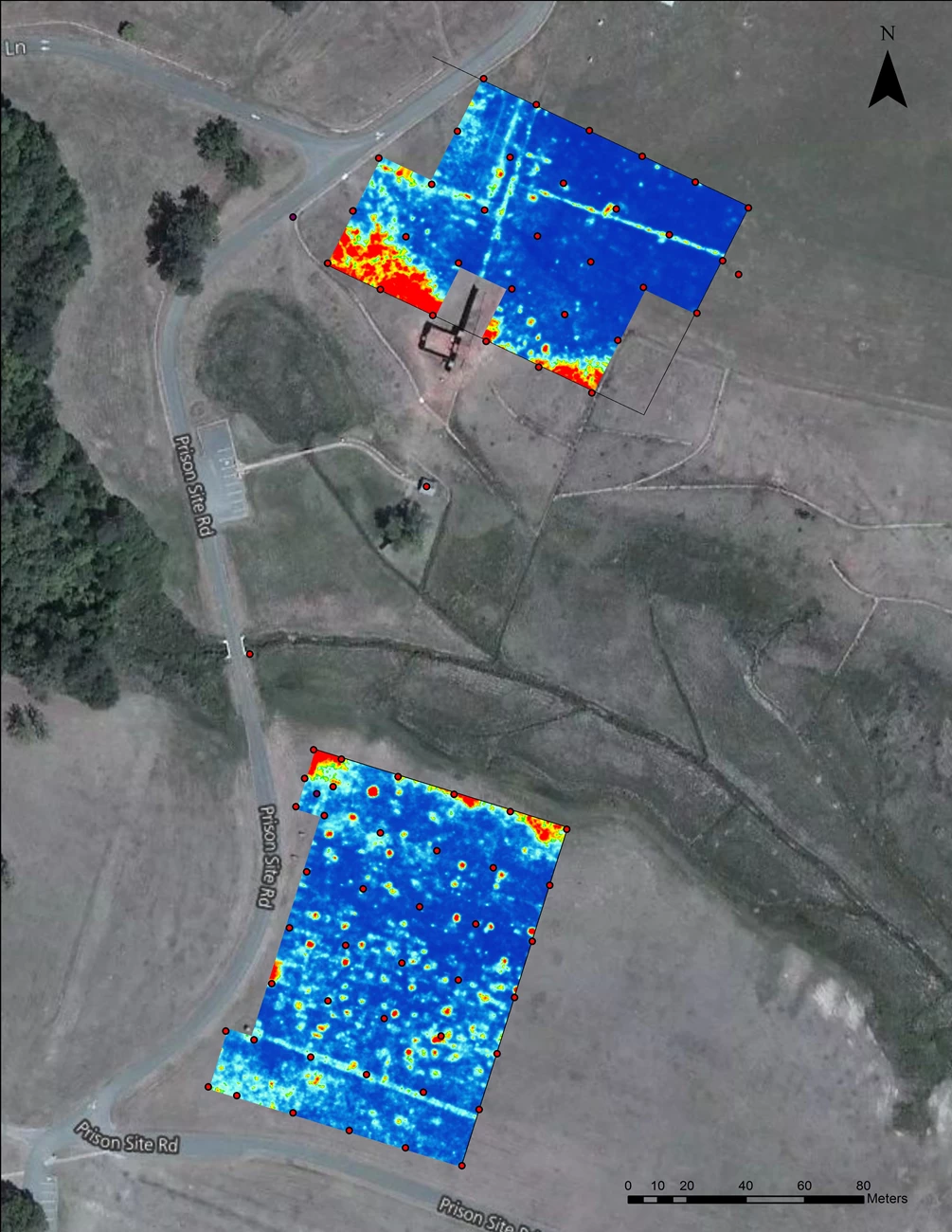Last updated: August 29, 2019
Article
Andersonville Civil War Prison Geophysical Survey Project

(NPS Photo)
Geophysical surveys allow for the non-invasive mapping of subsurface anomalies. Through use of ground penetrating radar, magnetometer, conductivity meter, and resistivity meter instruments, two areas within the prison enclosure were examined for the presence of subsurface remains associated with structures that were present during Union incarceration.
In the two areas examined, a total of 17,600 m2 was surveyed (Figure 3). The first area, located on the south slope of the enclosure, was composed of 24 20x20 meter and two 10x20 meter grids near the South Gate that with the primary aim of finding the sick call enclosures, the gallows, and the barracks buildings that historic references indicate were located within the vicinity. The second area, located on the north slope of the enclosure, was comprised of 19 20x20 meter grids near the North Gate that focused on pinpointing the Sutler’s store.

NPS
Because collection of the geophysical data at Andersonville is ongoing and will extend over two years, SEAC will continue to geophysically survey different portions of the park. Future efforts will continue to focus on the Market Street area of the prison, the 3rd hospital site to the south of the prison, and possibly the 2nd hospital site to the southeast.

(NPS photo)
